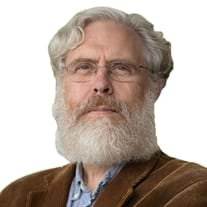Imagining the Next 100 Years of Science and Technology
As the Academy approaches its third century, we asked our members about the scientific discoveries they think might be made in the next 100 years.
Published October 1, 2017

As The New York Academy of Sciences approaches its third century, we started thinking about the scientific discoveries that might be made in the next 100 years.
So, we invited some of our most extraordinary young and senior scientist members, to offer their thoughts about what they believe could be the next generation of discoveries or the greatest challenge that science or technology must solve in the decades to come. The following is a selection of the many responses we received. They have been edited to fit space restrictions. All opinions cited are those of the authors named and do not necessarily reflect those of the editorial or scientific staff of The New York Academy of Sciences. We thank all those who contributed content and hope you enjoy reading these “imaginings.”
Cures, Holograms and World Peace
I imagine we will find vaccines to prevent the onset of diseases, allowing us to extend the average human lifespan by at least 20 years. We will be able to reverse global warming and secure the future of the planet. New modes of terrestrial transportation will be invented that will allow us to travel many times the speeds we are currently accustomed to.
People and companies will produce their own electricity using reusable energy sources, making power plants and the use of fossil fuels obsolete. Space travel will become a common mode of transport, allowing us to travel to places such as colonies on solar planets, and planetary moons. Quantum computing will make computers so powerful and network connectivity so fast that a small data center will be enough to serve the needs of all humanity. Television and phones will become obsolete and holography will replace them. Sense of touch and smell will further complement this technology, making it as real as the physical world.
“Lyf-Fi”
We can’t imagine being without “Wi-Fi connectivity” — our need for information, communication and entertainment makes us dependent on the internet and the technology to access it. We also need plants to promote life. Imagine how incredibly accessible and lush our world would be if we could manage to genetically engineer each of the millions of plant species to give off Wi-Fi. The economic and technological advancements would be huge. Regardless of the scientific credibility of this idea, I strongly believe that our future generations will embrace this innovation.
A Physical Internet and the Fifth Mode of Transport
Pipenet is a project started 15 years ago by researchers at CIRIAF-University of Perugia (Italy) proposing an innovative vision of a new transportation system. It consists of a low-cost, environmentally sustainable network of pipes with linear electrical frictionless engines powered by renewable energy sources where encapsulated goods are transported at a velocity >1500 km/h with a transportation capability equal to 1 ton/sec (see ciriaf.it/pipenet). This creates a physical internet consisting of a real network where products can be quickly transported from one location to another in real time. The last km of delivery can be implemented by drones.
Several Possible Futures

Humans are possibly the only species that can comprehend events 13.8 billion years ago and 100 trillion years from now — and successfully execute multi-century plans. Since my group works on transformative technologies (genome reading and writing, aging reversal, mirror life, molecular computing, synthetic neurobiology and immunology), we might be able to see possible futures (emphatically plural) a bit earlier than most people — and hence have a responsibility to discuss, far in advance, potential extreme outcomes (mixtures of positive and negative).
Next-generation sequencing arrived in six years, not the Moore’s law estimate of six decades. If all transtechs above are similarly super-exponential, and if trends toward non-violence and caring continue, then we may see an end to poverty, physical and mental disease and significantly augmented thought and compassion. Like our recently vast spectrum of physical and cultural artifacts, neural diversity may expand — de-pathologized and embraced — far exceeding current imagination. If the universe beyond earth seems uninhabited, we may seek sufficient practical understanding of our divergent goals, dignities and ethics, that we can send these as compact physical packages at relativistic speeds to other star systems (and capable of replication and phoning home).
This may be our Darwinian response to existence crises that could destroy all life on earth. We may experiment with small, intentionally isolated and self-sufficient colonies on earth — in stark contrast to our growing economic and cultural interdependence. Instead of issues of population explosion or excess-leisure, we may be collectively tackling the greatest challenge ever — survival — at a cosmic scale of time and space.
Creating Yonger Versions of Ourselves

Our lives began with the first living form that arose 4 billion years ago, a single celled microorganism that appeared when our planet was still being shaped by bombardment from the heavens. Inheritance is a fundamental characteristic of life. The DNA molecule in that primordial organism has been replicating itself with variation for more than 3.5 billion years. As we look to the future, a central question persists: can we tie the transient existence of our individual lives to the immortality of the DNA molecule that defines us?
The promise of regenerative medicine is developing more slowly than I had hoped 18 years ago when I first coined the term. We know there are substances in a fertilized egg that can turn back the genetic clock. Additionally, we know how to take newly created embryo like cells and develop them into adult tissues.
We are close to producing cells that can restore muscle function to damaged hearts and create neurons that can replace parts of the brain. What we lack is the medical science that allows these fresh cells to be systematically implanted into our tissues. An enormous amount of work remains to be done to understand the signals that direct a specific tissue to become what it is. In this we are underinvested.
The most powerful medicine is a younger form of oneself. Any country could become a world leader in this field, with proper investment in the fusion of cell biology and transplantation medicine. Whether it happens in my lifetime, or my children’s lifetime, or my grandchildren’s lifetime, this is a promise science can fulfill. When it does, it will be a gift to the future of mankind.
Space Elevators, Thought to Text and Energy-based Paint
With recent interest in space tourism, I think it’s worth speculating about the creation of “space elevators” — structures that will allow rockets to launch at the edge of the atmosphere, rather than from the surface. While the concept may seem far-fetched, rapid developments in space-based civil and mechanical engineering, have sparked numerous innovations.
I’m also excited about brain-computer interfacing, especially noninvasive devices that allow users to accurately detect activity within their brain. Companies like Neurolink and Facebook have been investing in research to enhance the speed of translating thought to text, and while the technology is developing, research is already being done such as OpenBCI’s open-sourced toolkit and the Muse headband.
Finally, the development of new renewable energy sources — from paint-on solar cells to microgrids — are soon going to provide a democratization of energy to all corners of the world. It’s incredibly exciting to be living in a generation where we’ll have the opportunity to contribute to such innovative research!
Shaking Hands Across a Virtual Divide

In the next century there will be unimaginable advancements in communication to link people all over the world. For example, video conferences where we can actually communicate tangibly. A person in Tanzania in an online meeting will be able to shake hands with another person in Belgium!
Now, the questions are: “Is it really possible? How does this happen? Won’t that violate the laws of physics and nature?” Currently by wearing special gadgets we can simulate the feeling of shaking hands with another person through a computer, much like video game technology.
But in the future, people will be able to put their hands through the computer screen to shake hands with someone. This will mean that the relativity theory of Einstein, and others, will have to be rephrased or at least obeyed in the technological sense. It is also possible that, by then, people will not only physically communicate with each other using computers but also travel in computers! In simple terms, teleportation, a puzzle that researchers can surely solve in this century.
Greater Human Collaboration with Other Species
Forecasting across 100 years becomes more manageable when seen in stages of successive possibilities. I imagine three such stages of development:
By 2050: Each person will be able to scientifically understand himself/herself from a unique attribute mix point of view. Individuals will use available analytical tools and personal knowledge, to determine the meaning of their respective combinations of facts. Data used in determining this meaning will include the personal genome (a recent entity), the Myers-Briggs Type Indicator (MBTI, a 100-year-old instrument based on a theory of Carl Jung), and unlimited other measures. People will also sometimes interpret data for their dependents to help make needed decisions in health and other fields.
By 2085: This Personal Science-based information and activities opens the door for individuals to begin to understand members of other species in terms of their own defining attributes and to move toward collaborative behavior where appropriate. This will be the Age of Interspecies Personal Encounter and will engender greater compassion toward other species. We don’t need aliens arriving or communicating with us in order to experience a interspecies moment.
By 2120: This experience will lead researchers to raise a fundamental question — can the chemistry and behavior of animals in the wild be altered so that animals will not eat other animals and yet thrive and reach their Aristotelian actualization? Experiments will be done on a small scale and begin to influence general thinking.
Early Mars Settlers May Not Necessarily Be Human

Robotic and AI advances are eroding the need for humans to venture into space. Nonetheless, I hope people will follow the robots, though it will be as risk-seeking adventurers rather than for practical goals. The most promising developments are spearheaded by private companies: they can tolerate higher risks than a western government could impose on publicly-funded civilian astronauts, at a lower cost than NASA or ESA.
By 2100 thrill-seekers in the mold of (say) Felix Baumgartner, who broke the sound barrier in free fall from a high-altitude balloon, may establish “bases” on Mars, or maybe on asteroids. Elon Musk of Space-X has said he wants to die on Mars, but not on impact. But don’t expect a mass emigration from Earth. It’s a delusion to think that space offers an escape from Earth’s problems. Nowhere in our Solar System offers an environment even as clement as the Antarctic or the top of Everest. There’s no “Planet B” for ordinary risk-averse people.
But we (and our terrestrial progeny) should cheer on the brave space adventurers. Precisely because space is an inherently hostile environment for humans, these pioneers will have far more incentive than us on Earth to re-design themselves. They’ll harness the super-powerful genetic and cyborg technology that will be developed in coming decades. These techniques will be heavily regulated on Earth, but the Martians will be far beyond the clutches of the regulators.
So it’s these robotic spacefarers, not those of us comfortably adapted to life on Earth, who will spearhead the post-human era. Moreover, if post-humans make the transition to fully inorganic intelligences, they won’t need an atmosphere. And they may prefer zero g — especially for constructing massive artifacts. So it’s in deep space that non-biological “brains” may develop powers that humans can’t even imagine.
Uncovering the Depths of Earth’s Final Frontier

Humankind has traveled through treacherous currents, the driest deserts, howling winds and precarious storms to explore our world. However, there is one significant portion yet to be fully explored — the deep sea. The oceans house mystically magical organisms: bioluminescent organisms, venomous snails, shocking jellyfish, brilliantly colored fish, large mammals and clever cephalopods to name a few.
Organisms in the depths of the ocean are subjected to extreme conditions such as intense pressure and frigid temperatures. Deep sea ecological research explains how organisms have adapted to these extremes and has many implications in the improvement of conservation biology and the understanding of evolutionary biology.
Current scientific advancements and production of deep-sea vessels have allowed for limited deep sea exploration. It would be wonderful, in the upcoming years, for both scientists and the public to gain knowledge about the biodiversity housed thousands of meters below the Earth’s surface. The advancement of deep sea exploration relays the passion and natural curiosity of humans in the preservation of our wondrous planet.
More Women in STEM

At this year’s New York Academy of Sciences’ Global STEM Alliance Summit 2017, attendees witnessed the future STEM workforce — bright young women working with their peers to engineer solutions for some of the world’s biggest problems, including clean water and sustainable energy. These young women are part of the next generation of scientists, who will change the world with their research.
Developments in technology are enabling us to make discoveries in previously inaccessible places, from the depths of the ocean to the furthest reaches of space. While we cannot predict that we will find life on other planets or how many species are still left to discover, there is one thing that we do know: that women in STEM will continue to change the world through their research.
Broccoli by Bach, Melons by Mozart, and Apricots by Abba
How and why plants communicate bio-acoustically is not well understood nor documented, however it is known that they do so to relay information about the conditions of their environment (such as drought and predator threat) to each other. My work utilizes the research of evolutionary biologist Monica Gagliano, at the University of Western Australia, who studies their communication and records and analyzes both the sounds they make and their responses to sounds they hear or feel through vibrations. Scientific studies have documented that plants grow and bend specifically toward 220 hz sound, which can also be used in agriculture as a virtual fertilizer.
I plan to create a 3D animated interactive art installation incorporating holographic flower imagery, a bio-acoustic soundscape (using a laser doppler vibrometer or acoustic camera) and dancers (who become the flowers and ‘vibrate’ in tune with each other), with enhanced viewing via Microsoft’s wearable holographic headsets. I imagine that this blending of music and the arts with botanical science will enable greater yields of food sources that we will need to feed a hungry world as well as creating a whole new art form!
The Coming Revolution in Smart Electric Power

The way we generate and consume electricity in the early 22nd century will look a lot different than the way we do it in the early 21st century. Advanced sensor capabilities and smart internet-capable devices along with high-penetration renewable energy will transform the nation’s aging power infrastructure. This is starting to happen with power companies hooking up their networks to the burgeoning “internet of things.”
But that is just a precursor to a vastly more energy-efficient smart grid, where it will be common to find homes that generate much of their own power. Individual houses will have photovoltaic devices and small storage units so every home becomes an energy “prosumer,” producing electricity and selling it back to the grid. Those carbon-free and zero-energy homes will form networked microgrids, which feature a higher level of resilience if there’s ever a blackout in the main grid, they’ll be unaffected.
Power systems will be interconnected via the internet to allow consumers to optimize their electricity consumption. Dishwashers, refrigerators and electric vehicles will be automatically adjusted to real-time pricing signals. This will not only reduce energy bills, but also will significantly improve the efficiency and reliability of the whole grid.
You can be among this group of changemakers. Get invovled with The New York Academy of Sciences today!
